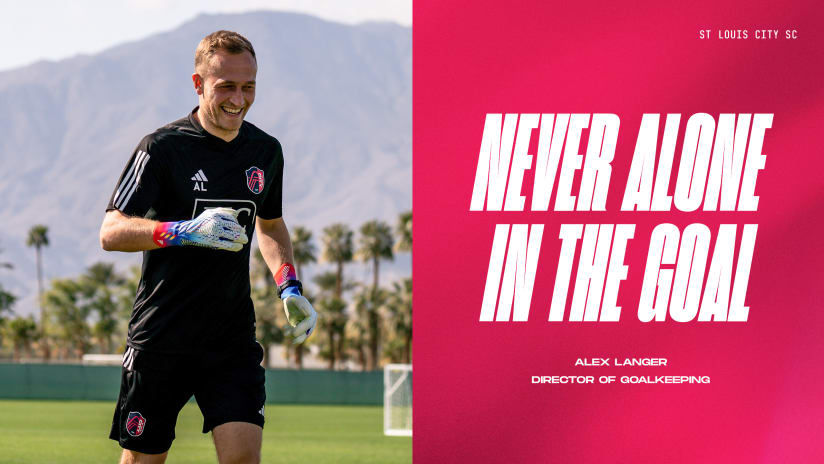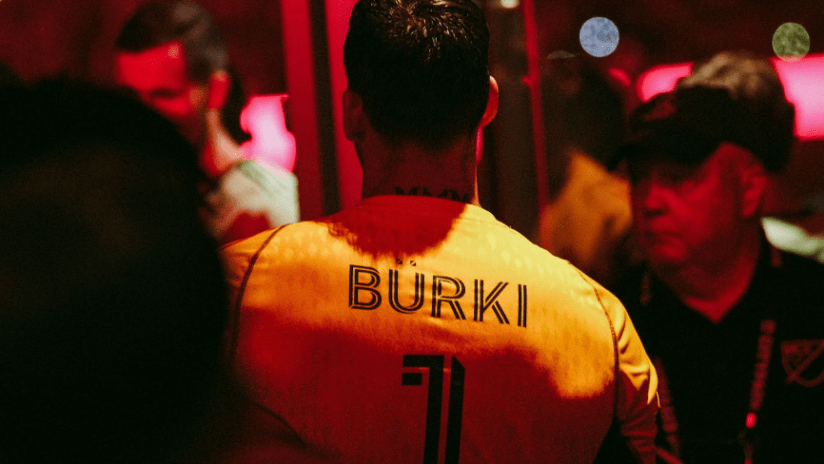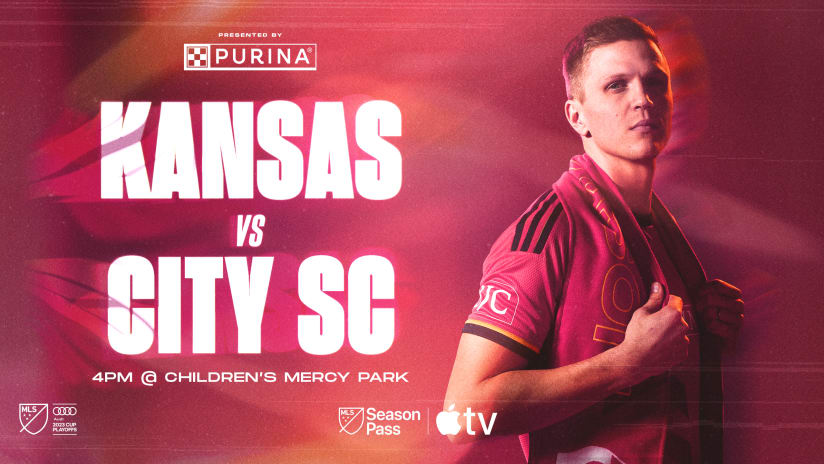Written by Michael Haffner
🇲🇽 Para leer en español, ver aquí. | 🇧🇦 Za čitanje na bosanskom, pogledajte ovdje.
Bob Wilson spent his entire club career as a goalkeeper for Arsenal F.C, playing 308 matches from 1963-1974. In the 2020 short film, “The Lonely Goalkeeper” Wilson talks about the struggles of being a goalkeeper stating, “They’re the only individual in a team game. There’s an incredible loneliness about it.”
But in 2014, the world took notice of Manuel Neuer who exemplified what a new type of goalkeeper can look like. Gone were the days when goalkeepers would be isolated and caged to their box. The lone player waiting in the back became a thing of the past.
Neuer would go on to win almost every title possible for a European soccer player, including the World Cup in 2014 – where a new label would rise for the type of dynamic playing style that included leaving the box and being more involved in the play of the match.
‘Sweeper Keeper’ became a common term in the soccer lexicon after Neuer showcased his ability to rush out of goal and sweep in behind Germany’s high line. Not just serving as a shot stopper – as many previously viewed the position – this approach treats the position more like another center back that’s essential to the buildup of play.
In the modern era of the game, goalkeepers are never alone.
Alex Langer takes a similar approach when working with the team. In talking with the Goalkeeping and Set Piece Coach, it becomes abundantly clear that he takes a collaborative approach to push the team forward and to inspire them to work better with one another. He understands the best route to success. “It’s always together.”
Learning from Your Mentors
Growing up in Stuttgart, Germany, Alex Langer was no stranger to Roman Bürki. “I knew he was a really good goalkeeper,” he says with a chuckle. When Langer played in the fourth division in Germany, Bürki was excelling in the Bundesliga at Borussia Dortmund. Bürki was someone he looked up to as a goalie. Despite being three years younger than Bürki, Langer was taken aback by how humble and open he was in interviews. This is why Langer wasn’t intimidated when he finally got to work with Bürki. “He would always put the team first.”
Never did he expect to eventually coach the player he had watched from afar.
Before he got to coach one of his idols, Langer found a mentor in his teen years in Michael Rechner. Langer was 14 when he joined the youth academy at Hoffenheim in 2008. There, Rechner was the goalkeeping coordinator before getting promoted to oversee the first-team goalkeepers in 2015.
“Every Monday was goalkeeping day. So, the analysts from the first team would join us and go over with us what the first-team goalkeeper did well and how he could have improved.”
Learning how to analyze film and studying how a goalkeeper could have done better provided the initial basis for Langer’s interest in studying the practical side of the game and implementing how to improve on mistakes.
While at Hoffenheim, a familiar name served as a scout within the club: Lutz Pfannenstiel. But it wasn’t until Langer came to the U.S. that they would reconnect.
Langer got his degree in Sport Business Management in Germany, and then came to the U.S. to get his MBA at Lenoir-Rhyne University where he also served as the first-team goalie.
“I actually saw the impact of my college head coach in my life for two years. And that's how I slowly got into the coaching pathway. I then coached at the University of North Carolina Wilmington in Division 1 soccer and saw my impact on their lives.”
Langer officially arrived in St. Louis, Missouri, on January 17, 2022. He knew little about St. Louis beyond what his wife told him from playing volleyball tournaments in the city growing up and occasionally driving through when traveling from her hometown in Kansas. “The Director of Team Operations told me what passion there is for soccer [in St. Louis]. I did not believe it in the beginning. I thought… okay, here’s another city in the United States that thinks they know soccer… But I saw that this city actually does.”
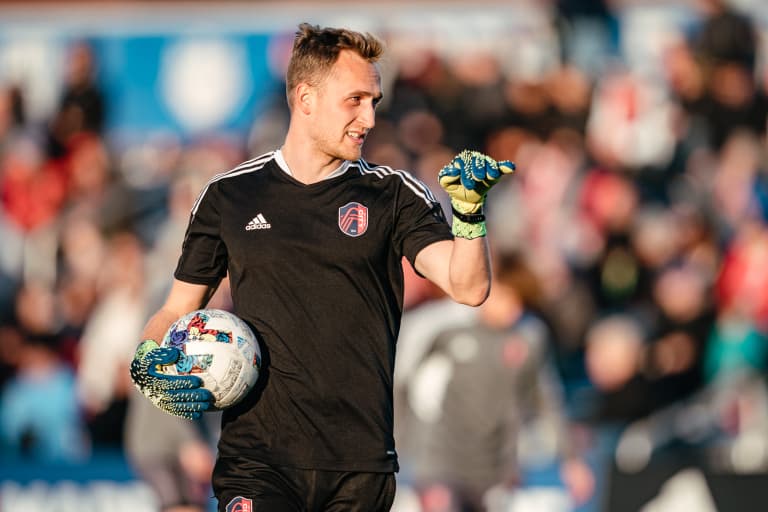
Building Goals with Bürki
Right from the start, Langer and Bürki treated the relationship as a collaborative process. “We had to find it together,” Langer explains. They both came with their own experiences and approaches to how to be successful at St. Louis CITY SC.
“How can we deal with situations that are going to come up? How do we manage workloads? How do we manage training sessions? Like what style do we want to work with?”
It was agreed upon that CITY would have three pillars to goalkeeping that Langer would focus on:
- Goal defending – Shot stopping
- Space defending – Defending inside and outside the box
- Distribution – Progressing the attack
Thankfully, CITY’s starting goalkeeper excels at all three to the point that Langer doesn’t see it as improving Bürki’s skills, but more so “maintaining.”
The direct style of play that the MLS is known for was a big learning curve that they both had to adapt to. MLS teams often play forward more quickly and operate with a lot more crosses and long throws than what they experienced overseas.
“We had to adapt to defend a lot more high balls. Roman is obviously really strong coming off his line. He has good timing and good anticipation. Bürki is one the cleanest goalkeepers I’ve ever seen.”
On the morning of our conversation, Langer worked with Bürki on three different exercises that were centered on goal defending but then on his feet as well. The exercises have an emphasis on getting the ball down quick for a pass. As Langer explains, they go together. “We need his feet. They are just that good.”
Data-Driven Collaborative Decisions
Like all great coaches, Langer knows his goalkeepers probably better than they know themselves. He knows that Bürki has 29.1 actions per game, and 60% of these actions are distribution. And that’s just the start of the numbers he recites as if the data is right in front of him.
“Bradley [Carnell] is a really innovative and a modern coach that relies heavily on stats to improve the team and preparing the team as best as possible.”
Seeing how Coaches Carnell and Hackworth look at the game through a stat-focused approach helped Langer focus on goalkeeper stats that “not a lot of people are using.”
Expected goals – or xG – is a common one that many teams use. Basically, if your expected goals stat is 2.5 that means the team should have scored 2 to 3 goals that game. The probability is assessed based on historical data about the shots and placement. However, these are expected goals that in actuality may not even end up on target.
But there's a stat that Langer has been more interested in lately and that is post-shot expected goals – PSxG. Because expected goals are a probability chance from that position and can include shots that never interact with the goalie, post-shot expected goals are every shot that ACTUALLY ends up on target. The difference is in the final placement.
Langer keeps this number in high regard so that he can see the number of goals Bürki prevents. “Right now, we have an average of 7.17 goals that Roman prevented in the first 20 games which is in the top of the league. So, we can see just how many goals Roman has saved us.”
Langer also does his own in-house data that is outside of what is typically calculated by the league, such as successful distribution. “For me, it's more looking at if Roman is playing a long ball with his left foot into a channel where we tell him to play the ball. We might get a bad flick and lose possession, but actually, Roman did his job because he put the ball in a channel where we wanted him to play it. That’s why I think sometimes you have to find your own data because every playing style is different. The generic stats aren’t necessarily built for our playing style.”
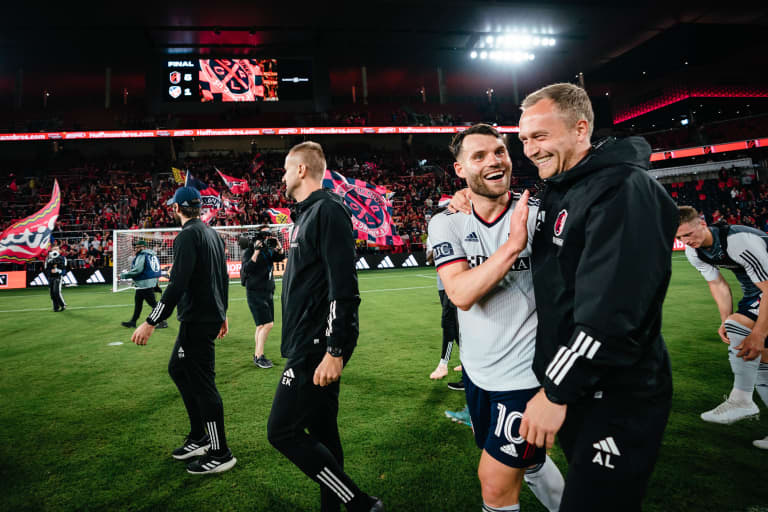
A Collaborative Stage is Set
To know how to defend, you must know a lot about how to attack. And vice versa. The two go hand-in-hand. With that in mind, it becomes less odd to think about a goalkeeping coach also being a set piece coach.
Last year with CITY 2, Coach John Hackworth said to Langer, “I like when the goalkeeper coach is involved in more than just goalkeeping. What would be an area that you would be interested in?” Because of Langer’s experience with set piece coaching at the university level, the two agreed it would be a natural fit. Additionally, this helped grow his relationship with Carnell since he previously coached set pieces at the New York Red Bulls.
Carnell spoke about how instrumental Langer has been on developing this side of the team’s attack. “In the preseason, I gave him the package of what I wanted to do, and he’s taken it and run with it. He’s pretty innovative and creative. He takes it personal,” Carnell admits with a laugh. “He doesn’t like giving up goals, and he likes scoring.”
Going into the match against Inter Miami on July 15, St. Louis was second in the league in set piece goals with 10, not including penalty kicks. Now, they have 13 following three impressive goals that night, increasing their total percentage of overall goals from set pieces to 30%. This is the exact percentage that the team hopes to hit.
“I think it's a cool responsibility. You are even more included with the team than you are as just a goalkeeping coach because I have to speak in front of the team every week. On Thursdays, I usually present our attacking set pieces. So, like what are we going to do? And then on Friday, I would say, ‘Hey, they [the opponent] are really good on these things. How can we defend them?”
At 29 years old, Langer is around the same age as many on the team and younger than Tim Parker and Bürki. While his youth might surprise some people, it actually helps him have a greater connection with his teammates. Where he can lead based on his experience but also have discussions as a peer with these players.
“When I was in school, I sat in the classroom, and someone told me how to do something. But then you think about it, and you maybe have a different idea. And usually, your ideas are not heard.”
Langer would rather open the floor to the class so that everyone has a say and can contribute to the overall success of the team. Whether it’s suggesting that Parker take up more space given his strength and size or discussing corners that should whip in or out, Langer wants the players to insert their thoughts into the process.
“I bring them together and we talk a lot. We come up with options together. You’ll see that the boys are actually focusing way more, and they are completely bought in.”
A coach he worked alongside years ago explained that ‘you want to build a frame for the team, but then they have to paint a picture themselves.’ You don’t always think about art when it comes to soccer, but then again, it is called the beautiful game.
“Ultimately the players have to make their own decisions. But if from the beginning, you’re planning together in a collaborative environment… then you're painting a better picture on the field.”
The team has a motto that has been repeated several times in my interviews with the players and coaching staff. It’s a mantra that Carnell wholeheartedly stands by and everyone has bought into: “Fear of failure is failure.”
And with the approach that Alex Langer is taking with this team, they never have to be afraid because they are never alone in individual decisions on the field. They are succeeding together.


